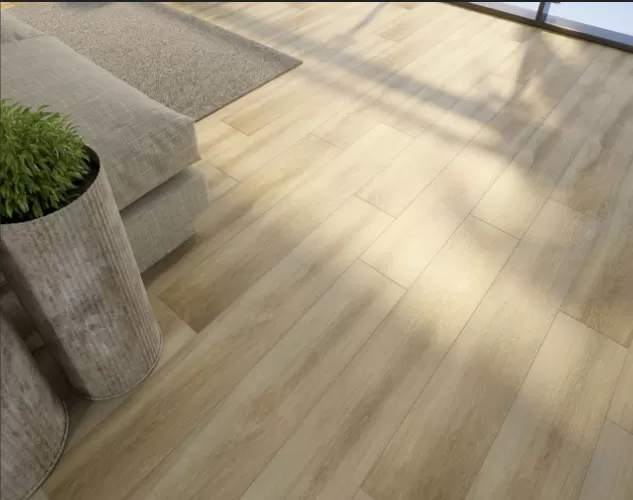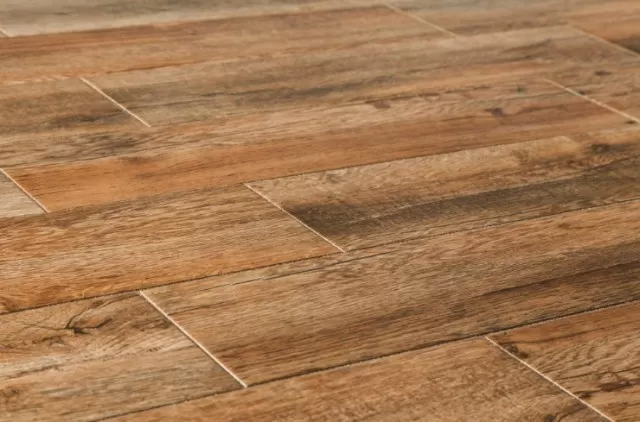Porcelain vs Ceramic Tiles: Choosing the Right Type for You. Regardless of whether you choose porcelain or ceramic tiles, proper maintenance is essential to keep them looking fresh and extending their lifespan.
By understanding the similarities and key differences between porcelain and ceramic tiles, and by following proper maintenance practices, you can ensure that your chosen tile material remains in pristine condition for years to come.
The Versatility and Resilience of Porcelain Tile: A Durable and Stylish Ceramic Option

Porcelain tile, derived from refined clay and other natural elements, offers an exceptional blend of durability and aesthetics.
Following the kiln-firing process, these tiles can retain their natural appearance or undergo a remarkable transformation, resembling various materials such as stone, wood, concrete, and more. While porcelain tile falls under the category of ceramic tiles due to its clay-based composition, it distinguishes itself through its robust construction and enhanced longevity, surpassing the durability of non-porcelain ceramic tile variations.
When selecting porcelain tile for their homes, individuals have the choice between glazed and unglazed options.
Unglazed porcelain tiles, also known as full-bodied tiles, exhibit color throughout their entire thickness, as opposed to having a surface glaze. This inherent characteristic makes them exceptionally durable, reducing the risk of chipping and increasing their longevity.
With their resilience and resistance to wear and tear, unglazed porcelain tiles serve as an ideal choice for high-traffic areas or spaces that demand long-lasting, enduring flooring solutions.
In addition to their outstanding durability, porcelain tiles offer a wide range of style options to suit diverse design preferences.
With the ability to mimic the look of natural materials like stone or wood, porcelain tiles allow homeowners to achieve the desired aesthetic without compromising on practicality. These tiles provide a versatile and low-maintenance solution for both indoor and outdoor applications, effortlessly combining the appeal of natural materials with the advantages of modern ceramic technology.
Whether it’s enhancing the elegance of a bathroom, adding a touch of sophistication to a kitchen, or creating a seamless transition between indoor and outdoor living spaces, porcelain tiles continue to be a popular choice for homeowners seeking a blend of durability, style, and versatility.
With their ability to withstand daily use, resist moisture, and offer a diverse range of designs, porcelain tiles are an excellent investment that can elevate the overall appeal and functionality of any living space.
Evaluating the Advantages and Disadvantages of Porcelain Tile: Making an Informed Decision
When considering porcelain tile for your flooring or countertop needs, it’s important to weigh the pros and cons to make an informed decision that aligns with your preferences and requirements.
Pros of Porcelain Tile:.
Unmatched Durability: Porcelain tile is widely recognized as the most durable tile option available.
Its superior hardness, density, and toughness make it highly resistant to cracks, chips, and scratches, ensuring a long-lasting surface.
Impervious to Water Damage: With an extremely low absorption rate, porcelain tile is virtually impervious to water damage.
This attribute makes it an excellent choice for moisture-prone areas such as bathrooms, laundry rooms, and patios, where it can withstand prolonged exposure without compromising its integrity.
Suitable for High-Traffic Areas: Thanks to its exceptional durability, porcelain tile can withstand heavy foot traffic over extended periods.
It is an ideal flooring option for busy areas within your home, ensuring that it remains visually appealing and functional for years to come.
Versatile Design Options: Porcelain tile offers a wide range of design options, including realistic imitations of natural materials like stone, wood, and concrete.
This versatility allows you to achieve the desired aesthetic without sacrificing durability or performance.
Cons of Porcelain Tile:.
Higher Cost: One significant drawback of porcelain tile is its price, which is typically 60 percent higher than ceramic tile.
The superior quality and durability of porcelain contribute to its higher cost. If budget is a primary concern, ceramic tile might be a more cost-effective alternative.
Difficulty in Cutting: Due to its density and hardness, cutting porcelain tile can be challenging.
Homeowners often require specialized tools such as a wet saw with a diamond blade to achieve clean and precise cuts. Additionally, the hardness of the tile can make it more prone to breakage during the cutting process.
For a flawless finish and to prevent damage, professional installation is recommended.
Maintenance and Upkeep of Porcelain Tile:.
Maintaining porcelain tile is relatively simple, thanks to its forgiving nature.
Here are some key points to keep in mind:.
Regular Cleaning: Sweep or vacuum the tile once or twice per week, depending on the amount of foot traffic.
This helps remove loose dirt and debris, preventing them from scratching the surface.
Routine Cleaning: Once a month, use a vinegar-and-water solution or a tile-friendly commercial cleanser to eliminate dirt and everyday buildup.
If you have glazed tile, mop the surface. For unglazed or textured tile, opt for a gentle scrub.
Avoid Harsh Products: Refrain from using oil-based products, waxes, abrasive scrubbers, and cleaners containing bleach or ammonia.
These substances can potentially damage the tile’s surface.
Thorough Rinse and Drying: After cleaning, rinse the tile with hot water and ensure it is thoroughly dried with a towel or microfiber cloth.
This helps prevent any water spots or residue from forming on the surface.
For detailed guidance on cleaning porcelain tile, you can refer to our tutorial, which provides Step-by-Step Instructions for cleaning glazed, unglazed, and textured tiles.
By carefully considering the advantages and disadvantages, as well as understanding the proper maintenance techniques, you can confidently choose porcelain tile as a durable and stylish option for your home.
Ceramic Tile: Affordable and Versatile Flooring Option

Ceramic tiles provide an affordable and versatile option for homeowners seeking flooring solutions.
Unlike their denser and harder counterpart, porcelain tiles, ceramic tiles are kiln-fired at a lower temperature, resulting in a softer and less dense composition. The clay used in their production is also less refined, contributing to their more porous nature.
One of the key advantages of ceramic tiles is their affordability.
Compared to porcelain tiles, ceramic tiles are generally more budget-friendly, making them an attractive option for those looking to achieve a desired aesthetic without breaking the bank. The lower production cost of ceramic tiles allows for a wider range of design options and styles to choose from, providing homeowners with ample choices to suit their preferences.
Ceramic tiles are particularly popular in warm climates, where their natural coolness becomes a valuable feature, especially during the summer months.
The ability of ceramic tiles to remain cool underfoot makes them a comfortable flooring option for regions with high temperatures, offering relief from the heat.
However, it’s important to note that the lower density and increased porosity of ceramic tiles result in a trade-off in terms of durability.
Ceramic tiles are more prone to damage, such as cracks and chips, compared to porcelain tiles. They may not be as suitable for high-traffic areas or environments that experience heavy use.
It is important to consider the specific needs of the space and the expected level of foot traffic when choosing ceramic tiles as a flooring option.
Despite their relatively softer composition, ceramic tiles still offer a versatile range of applications.
They can be used not only for flooring but also for walls, backsplashes, and other decorative purposes. Their affordability and aesthetic appeal make ceramic tiles a popular choice for various areas of the home, including kitchens, bathrooms, and living spaces.
In conclusion, ceramic tiles present an affordable and versatile flooring option for homeowners.
While they may be less dense and less durable compared to porcelain tiles, ceramic tiles offer a wide range of design choices and are particularly well-suited for warm climates. By considering the specific requirements of the space and balancing cost and durability, ceramic tiles can provide a stylish and cost-effective solution for your flooring needs.
Evaluating the Advantages and Disadvantages of Ceramic Tile: Making an Informed Decision

When considering ceramic tile as a flooring option, it’s important to assess its pros and cons to make an informed decision that aligns with your needs and preferences.
Pros of Ceramic Tile:.
Affordability: Ceramic tile is a cost-effective option, making it ideal for those working within a budget.
It is generally more affordable than porcelain tile, allowing homeowners to cover larger areas without exceeding their financial constraints.
Ease of Installation: Compared to porcelain tile, ceramic tile is easier to install.
Its relatively soft surface allows for straightforward cutting using a simple tile cutter, simplifying the installation process. This can be a significant advantage for those who prefer DIY projects or want to minimize installation costs.
Versatile Design Options: Ceramic tiles offer a wide range of design possibilities.
They come in various colors, patterns, and finishes, allowing homeowners to create a customized look that suits their aesthetic preferences. The durable glazed finish adds an attractive clean-lined appearance to the tiles.
Cons of Ceramic Tile:.
Lower Durability: One notable drawback of ceramic tile is its lower durability compared to porcelain tile.
Ceramic tile is more susceptible to cracks, chips, and damage, particularly in high-traffic areas. It is essential to consider the specific usage requirements of the space and the expected foot traffic when opting for ceramic tile.
Higher Absorption Rate: Ceramic tile has a relatively higher absorption rate, meaning it can absorb moisture more readily.
Homeowners should promptly clean up spills to prevent staining or water damage. It is advisable to avoid using ceramic tile in areas frequently exposed to moisture, such as showers or patios, where a more moisture-resistant tile like porcelain may be more suitable.
More Frequent Cleaning: Due to its higher absorption rate, ceramic tile requires more frequent cleaning compared to porcelain tile.
Weekly deep-cleaning is recommended to maintain its appearance and prevent the buildup of dirt and grime. Regular maintenance is essential to preserve the tile’s beauty and longevity.
Sensitivity to Temperature: Ceramic tile can feel cold underfoot, particularly during winter months.
While the coolness can be refreshing in summer, it may not be as comfortable during colder seasons. Consider using area rugs or underfloor heating to mitigate this issue if desired.
Maintenance and Upkeep of Ceramic Tile:.
To keep ceramic tile floors looking great over time, consider the following maintenance tips:.
Regular Sweeping or Vacuuming: Clear away loose dirt and debris by sweeping or vacuuming the ceramic tile once per week.
This helps prevent scratches and keeps the surface clean.
Mopping with Mild Detergent: Mix a mild dish detergent with hot water and mop the tile, working from one end to the other.
This routine can be done on a weekly basis to maintain cleanliness.
Thorough Drying: After mopping, ensure the entire area is dried swiftly and thoroughly with a towel or microfiber cloth.
This helps prevent water spots and keeps the tile in good condition.
For more detailed guidance on cleaning ceramic tile, refer to our comprehensive guide, which provides step-by-step instructions on keeping your ceramic tile sparkling.
By carefully considering the advantages and disadvantages, as well as understanding the proper maintenance techniques, you can confidently choose ceramic tile as an affordable and versatile option for your flooring needs.
*The information is for reference only.